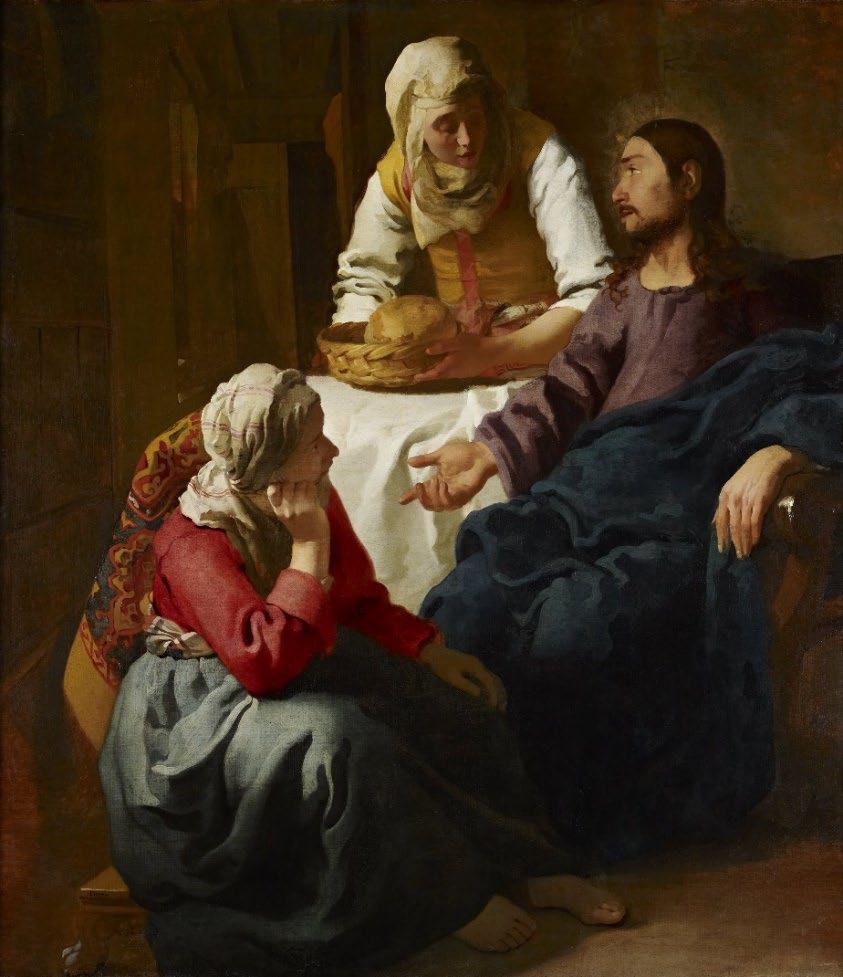
5 minute read
SAINTS MARTHA and
MARY of BETHANY
First Century A.D.
Advertisement
Feast Day: July 29
Martha and Mary are sisters to Lazarus whom Jesus raised from the dead [Jn. 11:1-44]. They live in Bethany, which is about two miles from Jerusalem, so they are not Galilean like Jesus and his disciples. Still, we can glean from the New Testament that they are dear friends of, and believers in, Jesus.
In addition to Lazarus’ raising, we also read about the sisters as they welcome Jesus into their home [Lk. 10:38-42] – a scene which features Mary sitting and listening to Jesus, while Martha busies herself with work. When Martha complains about Mary’s lack of help, Jesus gently chides her.
This well-known vignette is not a lesson about contemplation over action. Rather, it is an invitation to move from distraction to being attentive – in prayer and action.
Jesus did not tell Martha to stop serving! Indeed, hospitality is a spiritual gift from God – and it’s necessary for us to eat and drink. Martha’s service is good, but it seems to be tainted by anxiety. Jesus wants her (and us) to pay more attention to Him, and less to the distractions of daily life.
To which sister can you most relate? Why?
How can attentive listening improve your daily life?
When the product or the process become more important than the people served, we become “Martha.” Consider how this may be true in your own life and pray for the grace to find a balance between being “Mary” and being “Martha.”
Barabbas
First Century A.D.
Jesus and Barabbas
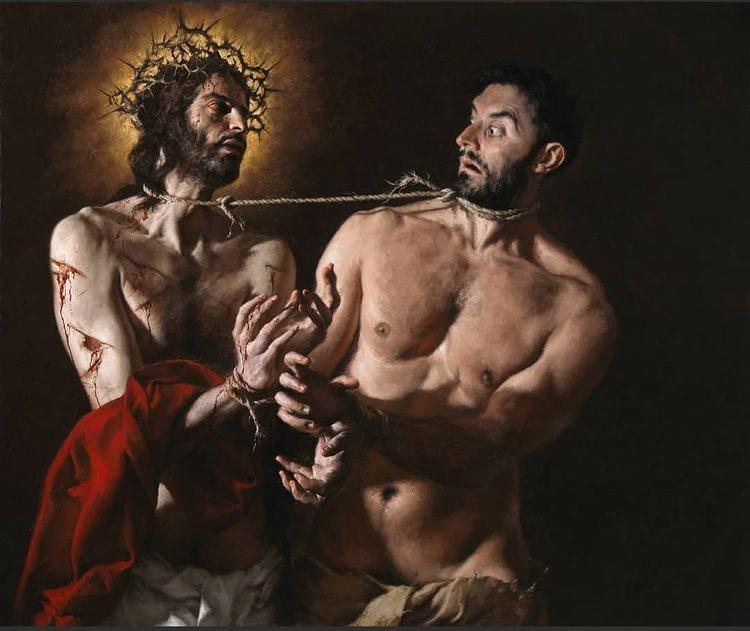
Giovanni Gasparro (2014)
At Jesus’ trial, Pontius Pilate offered to the crowd a choice of convicted criminals to be released: Jesus or Barabbas. Ironically, the name Barabbas [bar abba] means “son of the father,” highlighting the fact that instead of clamoring for Jesus’ release, the crowd chose the wrong “son of the father.”
Although he’s mentioned in all four Gospel accounts, the authors provide no biographical information about Barabbas prior to or after his release by Pilate. Nor do they agree with the exact nature of his crime.
Matthew calls Barabbas a “notorious prisoner” [Mt. 27:16]; Mark and Luke both agree that he was guilty of “murder and insurrection” [Mk. 15:7, Lk. 23:19]; and John merely refers to him as “a robber” [Jn. 18:40].
Although Barabbas was guilty, Jesus took his place (and punishment), just as he did for you and me. In that sense, we are all like Barabbas –with Jesus standing in for us to atone for our transgressions.
How do you daily choose Jesus – the true “Son of the Father”? What are some temptations or pressures that steer you away from making that choice?
Have you ever been falsely accused of wrong-doing, or punished for something that was not your fault? How can those moments draw us closer to Jesus?
How can you become more aware of Christ taking your place, and live more gratefully in that truth?
MARY, THE MOTHER of JESUS
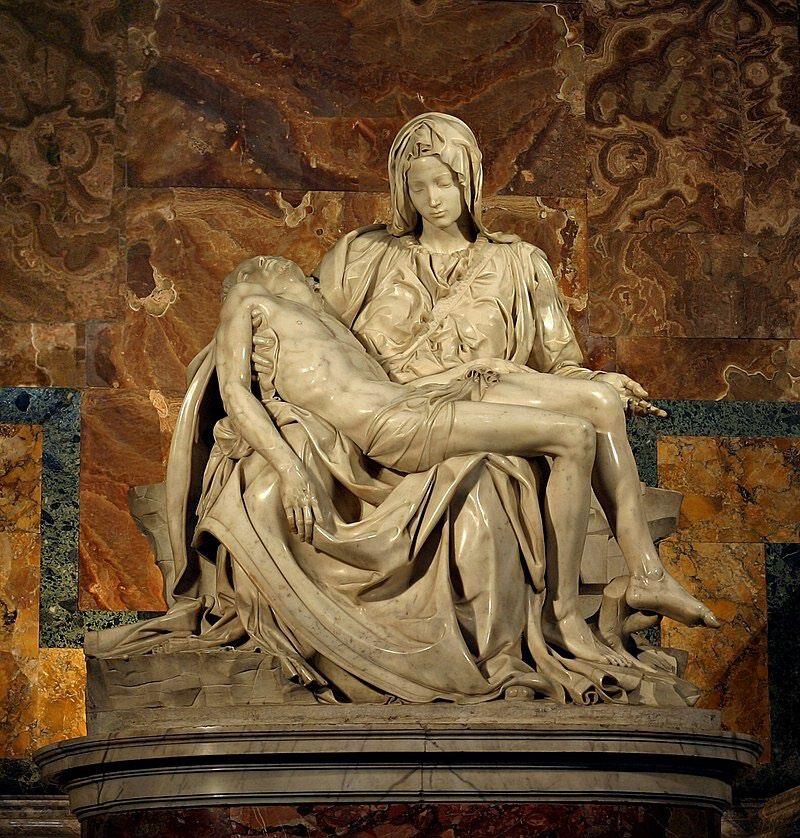
First Century A.D.
Michelangelo completed this magnificent work when he was just 24 years old! It was the creation that launched his career more than anything else he had completed prior to it.
He titled it Pietà – the Italian word meaning “pity.” Michelangelo does not want to convey a mere patronizing sympathy, but an expressive compassion. Notice how he has displayed Mary’s left hand – open and outstretched toward the viewer – as an invitation into her sorrow over the brutal death of her Son. It also serves to remind us of losses that we have mourned in our own lives.
On another level, the Pietà also suggests that we are never alone. Through trials and even death, our faith teaches us that Christ is with us in our deepest sufferings and Mary shares in our grief.
Michelangelo believed that the marble from which he carved the Pietà was the most ideal block he had ever used, and he would continuously tweak and refine and buff it toward perfection.
How can works of art inspire you to greater understanding, and greater faith?
To what aspect of the Pietà are you most drawn, and why? What would you ask of Michelangelo about it if you could meet him?
How can meditating on the subject matter of the Pietà help bring perspective to your own moments of suffering?
Saint Peter
d. c. 64 A.D.
Feast Days: June 29 (with St. Paul) and February 22 (Chair of St. Peter)
Crucifixion of Saint Peter
Caravaggio (1601)
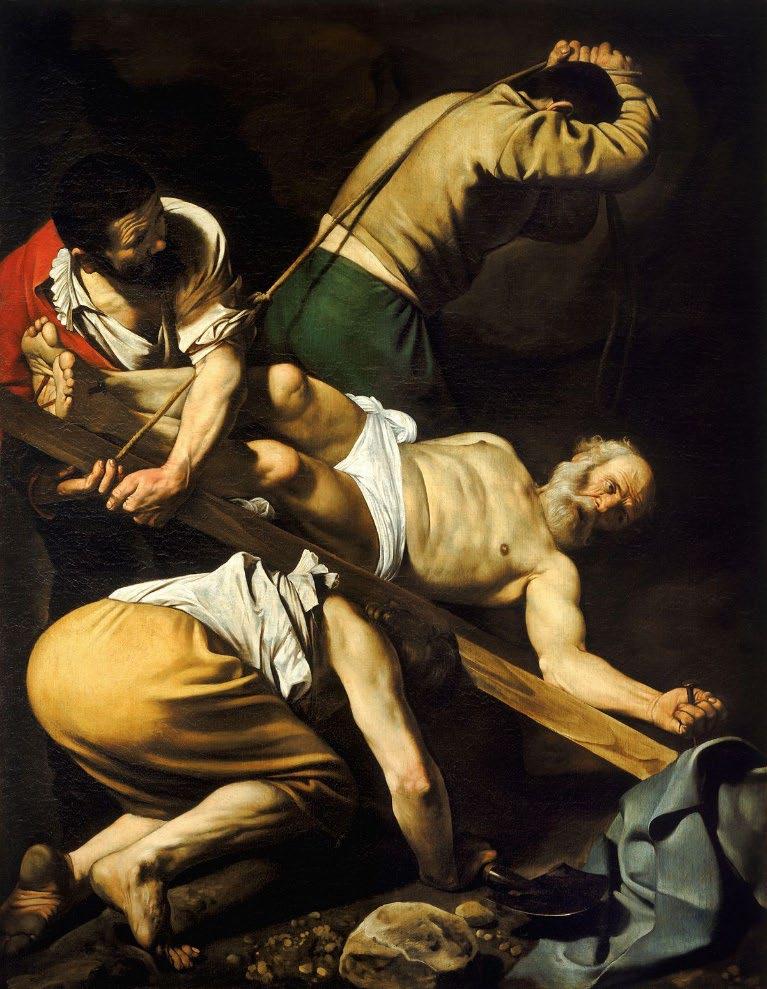
Simon Peter is a study in contrasts. The Gospels portray him as brave, yet weak; determined, yet scared; wise, yet lacking in understanding.
We first meet Simon, when he is asked by Jesus to cast his nets out again after a long day of fishing with no success [Lk 5:1-11]. The abundance of fish Simon eventually caught lead him to realize that Jesus was the long-awaited Messiah. Soon, Simon would embrace a new job – becoming a “fisher of men.”

Later, in response to Jesus’ question, “Who do you say that I am?” Simon asserted that Jesus was the Messiah. Simon’s reply correctly hit the mark, and so Jesus changed his name to Peter, which means “Rock,” upon which the Church would be built. [Mt. 16:13-16]
Jesus changed more than Simon Peter’s name. This simple Galilean fisherman emerged as the chief shepherd of the fledgling Christian community following Pentecost because Jesus had given him the keys of authority and responsibility, bridging Heaven and Earth.
As the recognized head of an outlaw Church, Peter would face his own death in Rome – being crucified upside-down because he felt unworthy to die as Christ had – in the year 64 AD.
The Vatican embraces Peter’s legacy by displaying crossed keys – the symbols of his (and every subsequent pope’s) authority – on its national flag.
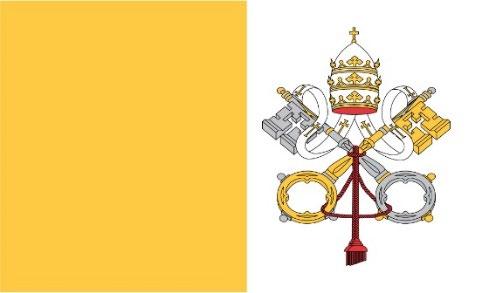
Who do you say that Jesus is?
What specific “keys” of authority has Jesus entrusted to you?
What lesson(s) can you learn from the life of St. Peter?
SAINT FRANCIS of ASSISI
1181-1226 A.D.
Feast Days: October 4
Dream of Innocent III
Giotto (1295)
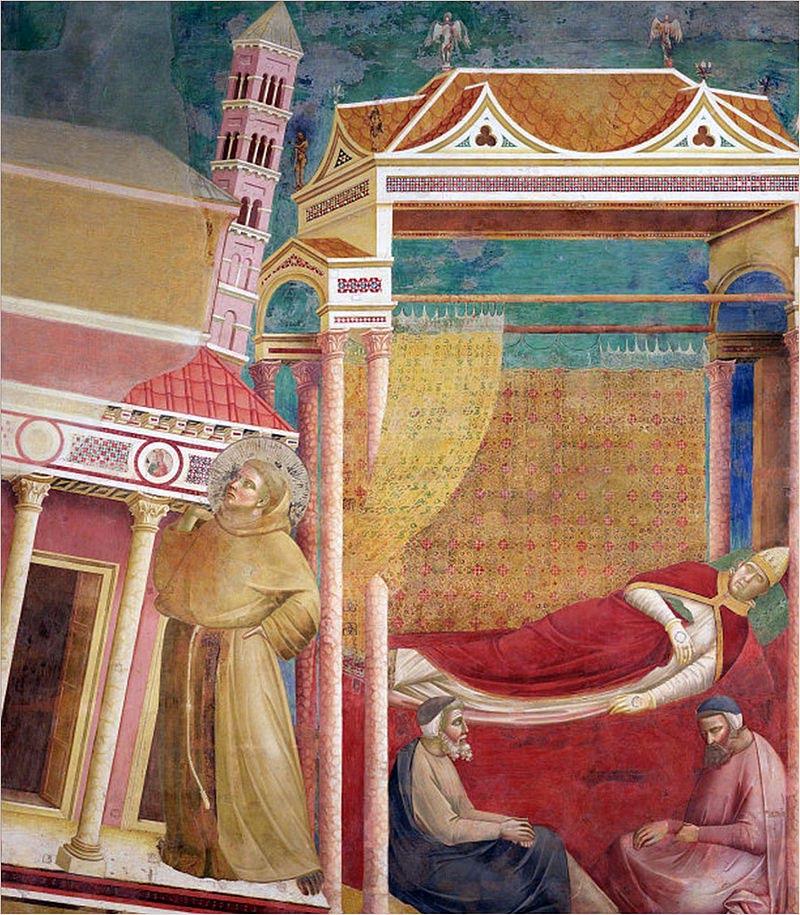
Growing up, Francis lived a privileged life of excess, as his father was a successful textile merchant. He enjoyed parties and socializing with his friends and wanted very little beyond these pleasures.
As he matured, Francis felt an increased attraction to prayer and living out his Christian faith. In one famous instance, he heard the voice of God speak to him as he prayed alone in a run-down chapel. God commanded Francis, “Repair my church, which has fallen into ruin.”
Francis incorrectly interpreted God’s request to rebuild the crumbling chapel of San Damiano. But eventually he came to realize that his true calling was to build up the Church – that is, the Body of Christ – of which we are all a part.
As he worked with the sick and poor in and around Assisi, Francis came to understand that his relationship with Jesus Christ inspired a deeper love for others and for God’s created world.
His new lifestyle attracted many followers, so Francis traveled to Rome seeking the Pope’s blessing to start a new religious order centered on humble service.
At first, Francis’ plans were rejected as too extreme. However, after a vivid dream which featured him holding up the Basilica of St. John Lateran, Pope Innocent III relented and approved all of Francis’ plans.
In what area of your life could you more effectively embrace humility? With whom can you show humility?
How can you help to build up the Church – the Body of Christ – in your little corner of the world?


